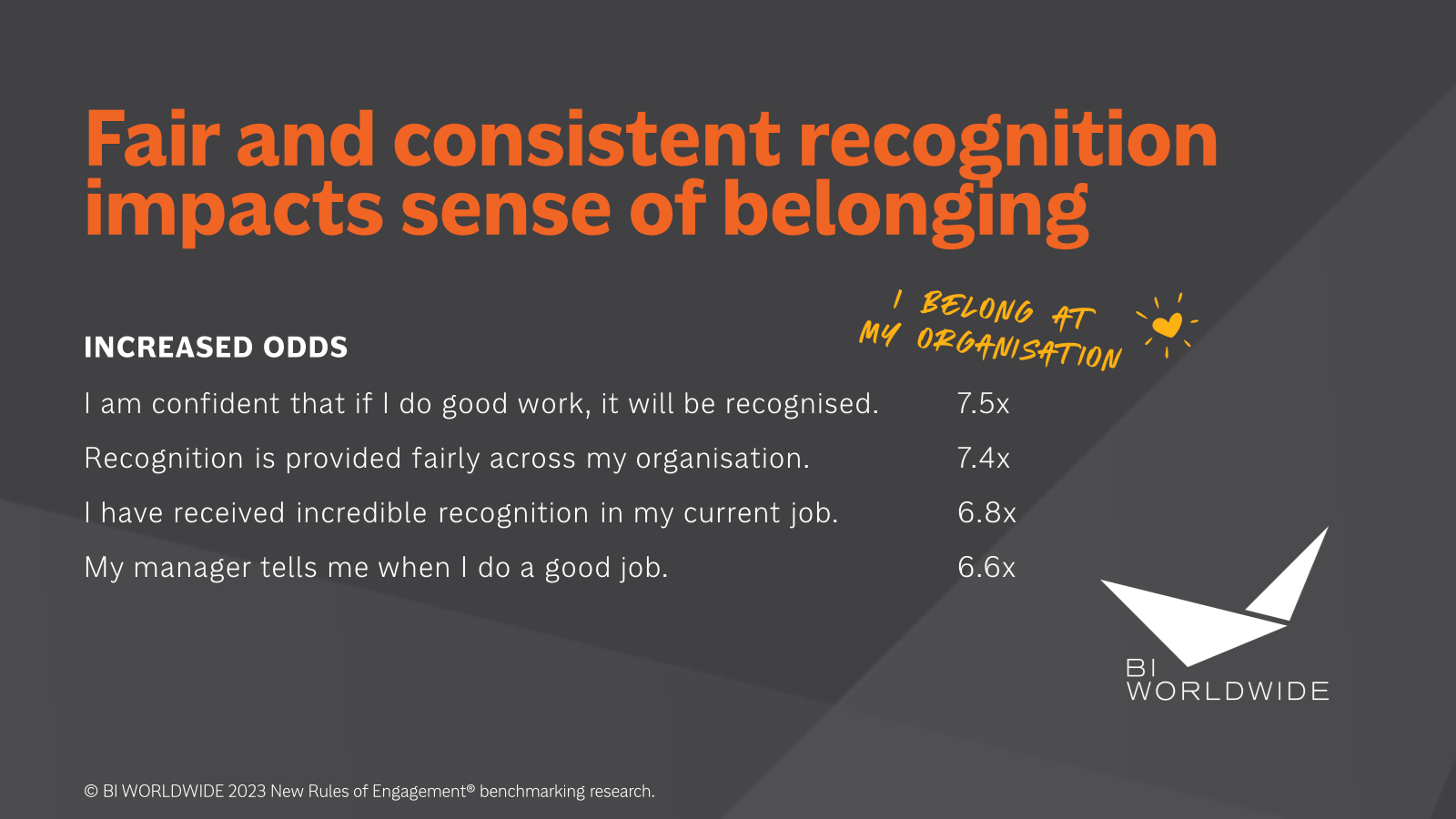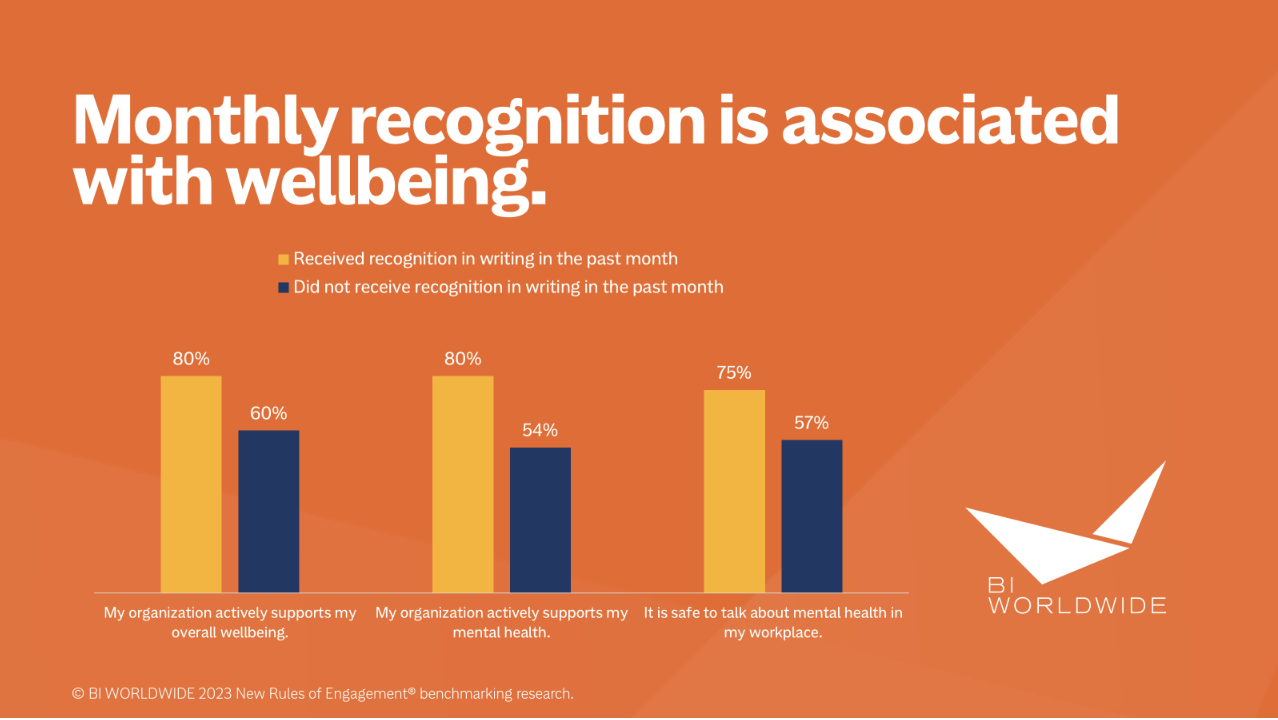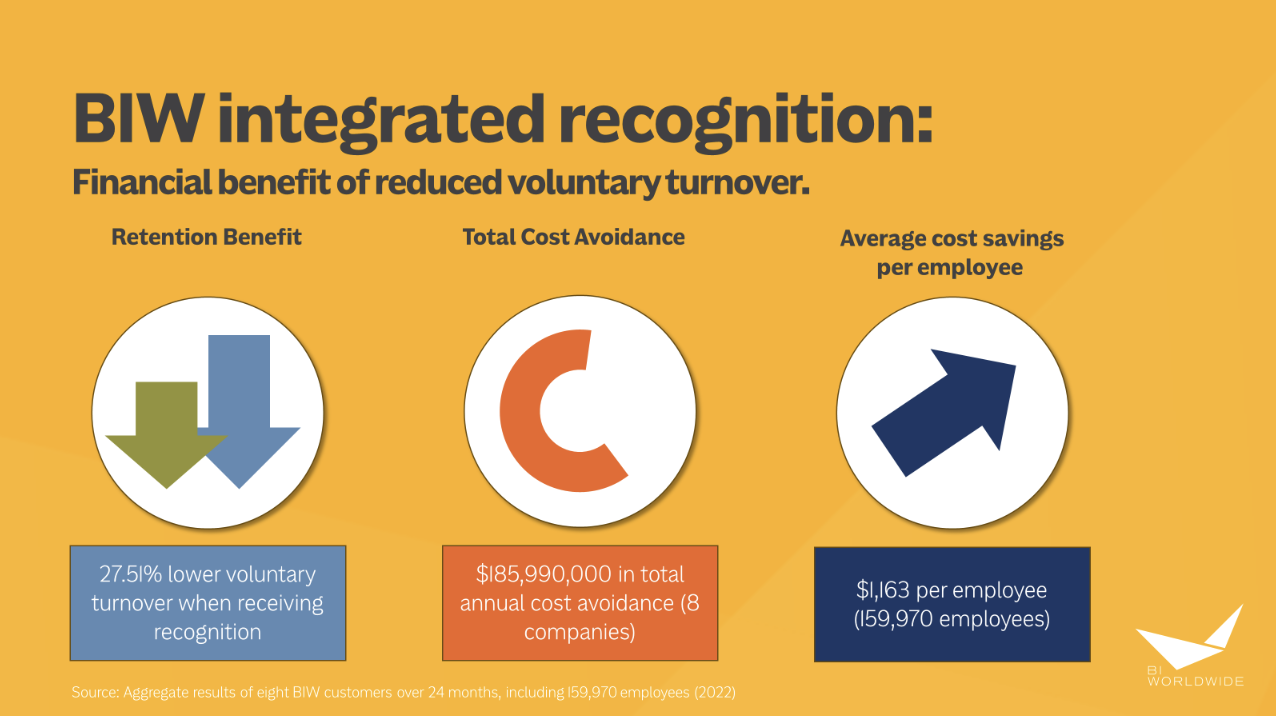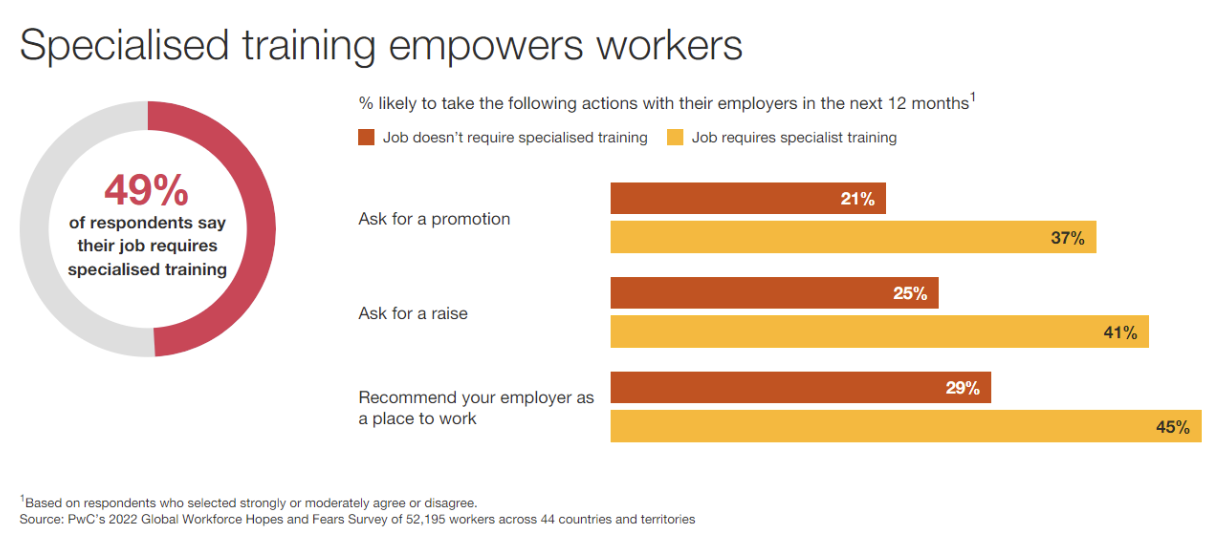As megatrends continue to change the landscape of the workplace, the challenge for organisations in retaining the best employees is greater than ever.
Understanding that an organisation’s success hinges on its employees, in this article we explore why retention matters and the factors impacting it, how employee engagement can help, and some of the employee engagement strategies that can support successful businesses retain their best talent.
Why employee retention matters?
Retaining the best employees will always be a business priority for several reasons, including:
Costs and ability to recruit
Based on latest figures, it's estimated that the cost of replacing an employee could be as high as 1.5 to 2 times an employee’s annual salary due to hiring costs, training fees, and lost productivity. The challenge and impact could be compounded even further for those employers with hard to fill vacancies, due to specialist skills or customer relationships, for example.
Culture
A key component of an effective team is in the relationships. Organisations that experience high churn rates will have their ability to form strong, trusting bonds impeded, limiting their effectiveness and productivity.
Customer satisfaction
Dissatisfied and disengaged employees on the verge of leaving are less likely to show the same commitment and effort as their engaged colleagues, having a knock-on impact to the levels of quality and service they’ll deliver to your customers. Similarly, whilst new recruits will (you hope) bring a fresh enthusiasm and dedication to the role, whilst in the onboarding and training period they may be less able to deliver the same levels of customer service expected, risking customer dissatisfaction.
What are the factors affecting employee retention?
As the world becomes more interconnected, workplace demographics shift, and technology continues to advance at a lightning pace which impacts on an organisation’s ability to retain its staff. Some of the factors affecting employee retention in the current market include:
Compensation vs Purpose
According to the PwC Workplace survey, pay remains the highest cited factor affecting retention. This isn’t surprising, with record inflation in much of the world, volatile financial and housing markets, a pandemic, and a variety of other factors mean workers are being pushed and pulled in several directions, impacting their ability and willingness to remain with an employer long-term. But being fairly compensated isn’t the only benefit employees seek these days. Today’s employees, particularly younger workers, seek a sense of purpose and belonging at work. They want their work to align with their values and serve as a source of fulfilment and purpose.
Flexibility
Mitigating the impact of pay is flexibility. According to the same PwC Report, workers who were unable to work remotely were ‘far less likely than others to say they find their job fulfilling, believe that their team cares about their well-being, think that they’re fairly rewarded financially, or feel they can be creative in their work’.
For roles that can be remote, in an interconnected world of employees becoming increasingly accustomed to remote work, it's plausible that competition to retain employees can now come from any corner of the globe.
Unsupported and untrained managers
The pace of employee turnover is higher than anticipated, and the issue, according to Gartner, is being intensified by it taking 18% longer to fill roles than pre-2020. As a result, managers are having to spend more time recruiting and less time being able to support and drive the development of their teams. Add to this a challenge identified in research by Mercer who found that eight out of 10 companies focus on individual goals, whereas just five out of 10 work towards the goals of the broader business unit.
With these two trends at play, it’s easy to see how, without the right support, training, and processes, a negative cycle can begin.
Firstly, in fighting the fire of recruitment, managers risk being able to effectively support employee development.
Secondly, if manager goals are primarily focused on individual success, and with fear of perpetuating the eternal recruitment process, they may seek to keep the ‘best people’ within their team, potentially restraining those employees from being able to move within the business, risking dissatisfaction, disengagement, and, ultimately, retention.
Skills gap and gig economy
According to the World Economic Forum, employers estimate that 44% of workers’ skills will be disrupted in the next five years; however, according to the PwC 2023 study, employees don’t have the same view with just 36% of employees perceiving their job will change in the same period. The report delved further to reveal that it was mainly those in specialised roles that could foresee the need for upskilling, leaving non-specialised workers ‘vulnerable’ with the changing skills needs in the workplace. This means, as the skills gap widens, competition for highly experienced employees and those with specialist skills is going to become increasingly fierce. In the PWC report they suggest that specialist skill employees are 1.5 times more likely to ask for a pay rise and a promotion vs non-specialist workers in the next 12 months.
Inclusion
CIPD reports that some marginalised groups, for example Women and LGBTQ+ people, are more likely to be disproportionately subject to ‘push factors such as discrimination, exclusion, and barriers to work’. According to Stonewall, one in five LGBTQ+ people were the target of negative comments at work, over a third of LGBTQ+ people feel they need to hide who they are at work, and one in five feel that being LGBTQ+ limits their job opportunities. Meanwhile, heavily driven by the motherhood penalty, the latest PwC Women in Work index claims, ‘If progress towards gender equality at work continues at its historical rate, an 18-year-old woman starting work today will not see pay equality in her working lifetime’. BI WORLDWIDE’S (BIW) latest research showed that those who felt there was inequity in their organisation were 7 times more likely to feel harassed at work, 4 times more likely to wish they were working somewhere else, and 37% of them planned to leave their organisation within the next 12 months.
What helps to improve employee engagement and retention?
Inclusion, belonging, and purpose
More than anything, inclusion, belonging, and sense of purpose is key to engagement. In latest BIW research, those who received recognition in writing within the last month were 3.1 times more likely to say ‘it’s easy to bring their full selves to work’ and those who said they felt included were 77% more likely to recommend their organisation as a great place to work. Ensure employees understand how they fit and the role they play in your company mission. Focus on implementing strategies and processes to make your workplace inclusive, fair, and accessible to all.
New hires who are reminded how they impact the company mission are 2.1 times more likely to want to stay. BI WORLDWIDE New Rules of Engagement® Study 2023
Reward and Recognition
If compensation and benefits is how you attract employees, reward and recognition is how you keep them. Well implemented programmes are the perfect way to consistently acknowledge and celebrate achievements across your business and demonstrate the value from both individual and team contributions. Latest BIW research shows that new hires that had their 1-3-year service anniversaries celebrated were half as likely to have searched for a new job vs those who didn’t, and more encouraging, fair and consistent recognition impacted sense of belonging.

Focus on health and wellbeing
Work and health are inextricably linked, and employee wellbeing (physical, mental and social health) will all have an impact on productivity and employee happiness. Businesses that demonstrate they’re proactive in supporting employee health and wellbeing and mitigating against common issues such as workplace stress and burnout will be more likely to retain employees.
Organisations that recognise individuals who live out company values have employees who are nearly 11 times more likely to say their company actively supports their wellbeing. BI WORLDWIDE New Rules of Engagement® Study 2023

Personal and professional growth and development
Employees no longer wish to be seen as assets and are looking for organisations that offer a two-way commitment to progression and development. Employees want to be provided with access to the tools to excel in their current roles but also their future growth. The opportunity for employees to learn and grow professionally and personally has always been important in the workplace. Now, it’s become minimum requirements for companies who want to motivate, inspire, and retain their employees.
9 in 10 employees who state their job allows them to master the skills important to them feel like they belong at their organisation BI WORLDWIDE New Rules of Engagement® Study 2023
The best employee engagement and retention strategies?
With these in mind, here are our suggestions on some of the most effective employee engagement strategies that can support retention:
Recognition Programmes
Best-in-class recognition programmes have the ability to not only provide an outlet that celebrates employee achievements but can help to build a positive workplace culture through all the moments that matter in an employee lifecycle. From onboarding through to major service and personal milestones, recognition programmes can support in acknowledging each employee’s individual journey through the business and be leveraged to demonstrate the organisation’s appreciation of their personal value and contribution. Strategic recognition programmes allow for a consistent reinforcement of company values and behaviours and can be utilised to operationalise strategic business priorities such as DEI to increase inclusion efforts and sense of belonging.
At BIW, we believe the best and most impactful way to utilise your recognition budget is to implement a three-dimensional strategy that encompasses base recognition, strategic recognition, and performance-based recognition. This approach has been implemented by multiple BIW clients and has led to significant reductions in voluntary turnover and major financial benefits as evidenced below:

Incentive and recognition rewards
Over and above pay and benefits, rewards provide a unique opportunity to magnify recognition. When implemented well, incentive and recognition rewards can inspire and motivate employees to deliver more discretionary effort, increase satisfaction, and improve loyalty and retention. Research shows the most effective rewards are non-cash-based, such as travel and experiences due to their ability to inspire and tap into emotions in a way cash and cash alternatives can’t. Building out programmes that offer a mix of reward earning opportunities is an effective way to sustain engagement and employee retention.
Points-based programmes that allow employees to redeem against a wide range of aspirational merchandise-based rewards can provide an effective alternative where travel and experiences isn’t viable.
Personal Development and Progression Planning
As technological advancements change how we deliver our work, organisations will need to focus on training and development to ensure they don’t get left behind.
According to the HBR, ‘rather than being identified through their job titles, employees are instead profiled by their talents. These talents form part of a ’skills marketplace’ that allows managers to profile projects based on the expertise they require and match it with the experience available within the business. This approach also enables organisations to more accurately and proactively assess where they might have skills gaps - It’s Time to Reimagine Employee Retention (hbr.org)
Organisations should be looking to build structures and processes that support, encourage, and recognise creativity, innovation and risk taking with learning opportunities that go beyond role specific curriculum and allow employees the option to explore and develop their strengths and skills that can add value across the business. The more opportunity they have to develop their skills the more likely they are to feel they belong at their organisation. For example, BIW’s new reward solution, Mastery Marketplace, gives employees, salespeople and channel partners the opportunity to upskill, try something new or dive deeper into their passions .
Wellbeing initiatives
From ways of working through to pay and benefits and everything in between, assessing your organisation’s approach to supporting employee wellbeing is key to sustained engagement and retention.
To ensure your organisation is getting this right it’s critical that your employees are included in the approach. In an article by the HR Daily advisor, they suggest, ‘a simple step any organisation can take to increase its employees’ level of commitment is to foster greater two-way communication instead of the top-down approach many organisations default to’. More importantly is personalisation in approach. When it comes to wellbeing, what works will differ for each of your employees so building flexibility and choice into your approach will ensure you can maximise the inclusivity and impact of your solution.
Manager and leadership training
Research shows that managers are at the front line when it comes to influencing employee engagement and, subsequently, retention. Gallup estimates that managers account for at least 70% of variance in employee engagement scores across business units yet suggest only 3 in 10 managers are equipped to be effective.
Effective managers help their teams to thrive, through personalisation of the employee journey, and by focusing on value and supporting creativity and innovation as employees progress.
With this in mind, ongoing investments should be made in programmes that focus on manager training as well as tools to support those that need extra guidance to deliver a positive employee experience. The Harvard business review outlined that to support retention, managers need help and support to deliver upon three key areas:
- Focusing career conversations on progression, not promotion – this should include activities such as strength spotting and creating connections.
- Making career experiments easy, including providing opportunities to ‘dip their toe’ into other roles and skills marketplace where employees are identified by their talents and skills rather than their job titles.
- Measuring managers on people potential, not team performance, including focusing metrics on mobility of employees in the organisation and empowerment to help employees demonstrate and develop their transferable skills.
The good news is that employee engagement strategies such as recognition can offer a wealth of tools and insights to support in these areas. Using recognition data to identify trends and patterns in recognition behaviour can be a great way of revealing strengths or underutilised skills within employees, as well as highlighting where company values and desired behaviours are being expressed around the organisation. The BIW recognition solution also features a number of tools including Recognition Advisor, which, based on research, nudges managers when recognition is overdue to help build up recognition habits and increase employee satisfaction.
What are the business benefits of improved employee engagement and retention?
According to Gallup, an employee’s intent to leave was reduced by 18 per cent points when they said they were engaged at work and Ranstad suggested that 34 per cent of UK employees would rather be unemployed than unhappy in their job. These, along with many other research studies, prove the undeniable connection between engagement and retention, making a strong business case to focus on it as an organisation and leaders. But to be effective requires investment, so what’s the return? To close our article here are some stats:
- Cited in the Harvard Business Review, ‘MIT researchers found that companies in the top quartile of employee experience developed more successful innovations, deriving twice the amount of revenues from their innovations as did those in the bottom quartile — and their industry-adjusted Net Promoter Scores (NPS) were twice as high.’
- Performance from the most engaged employees was 11.2 per cent higher than the least according to ADPRI Research.
- Gallup suggests that companies with highly engaged employees outperform competitors by 147 per cent!
- For each one-star improvement in a company’s Glassdoor rating it corresponds to a 1.3-point out of 100 improvement in customer satisfaction scores — a statistically significant impact, which was more than twice as large in industries where employees interact closely and frequently with customers.
Retain the best employees with effective engagement strategies from BI WORLDWIDE
Employee retention is a cornerstone of the world’s most successful businesses. With the anticipation of growing employee turnover rates, retention has become a top priority for global HR leaders.
As Employee Engagement specialists, at BI WORLDWIDE we understand the factors that impact retention and the solutions that can be deployed to drive satisfaction and motivation amongst employees of the world’s largest organisations.
Want to learn more about how we can help? Click here or contact us to discuss how we can support employee retention in your organisation.















